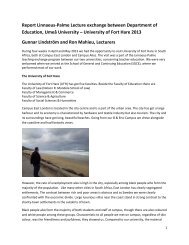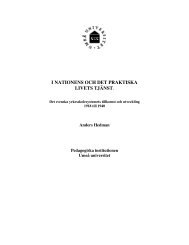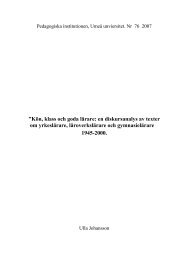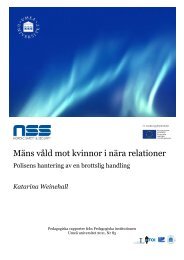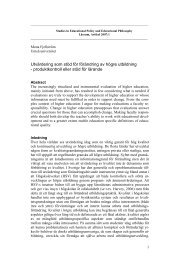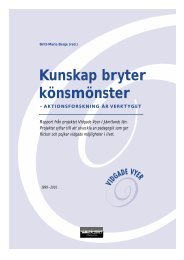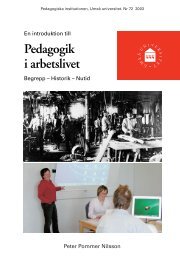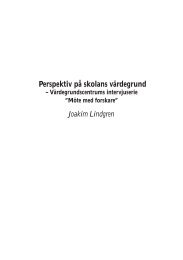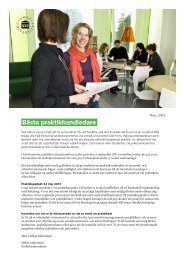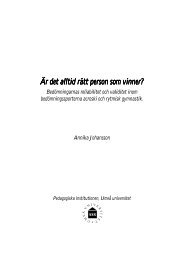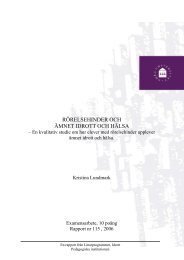IDENTITETSSKAPANDE I STUDENTFÖRENINGEN ULRIKA ... - DiVA
IDENTITETSSKAPANDE I STUDENTFÖRENINGEN ULRIKA ... - DiVA
IDENTITETSSKAPANDE I STUDENTFÖRENINGEN ULRIKA ... - DiVA
You also want an ePaper? Increase the reach of your titles
YUMPU automatically turns print PDFs into web optimized ePapers that Google loves.
I D E N T I T E T S S K A P A N D E I S T U D E N T F Ö R E N I N G E N<br />
What meanings are associated with the ideal identity? Who represent the<br />
‘others’, and how do the members distinguish themselves from them?<br />
In what ways do the members try to be in accord with, represent or re-negotiate<br />
the ideal identity?<br />
What symbolic capital do the members try to gain in the society and how does<br />
this manifest the ideal identity?<br />
How is the ideal identity manifested as an intersection of class and gender and<br />
what does this mean to individual members in terms of ideological dilemmas?<br />
Methodological considerations and issues<br />
The main data was collected form interviews with members of the board of<br />
three student societies. The interviews were based on an interview guide in<br />
which the informants were asked to describe, explain and take a stand on various<br />
issues related to their background, education, view of the future and involvement<br />
in the students’ society. The informants were asked to describe the<br />
members of the board, the other members of the society and their fellow students,<br />
and to reflect on the university environment. They were also asked to<br />
comment on some pictures and texts taken from the union’s homepages.<br />
A total of 29 board members were interviewed. They represented three different<br />
students’ societies, belonging to the Faculty of Natural Sciences and Technology,<br />
the Faculty of the Social Sciences, and the Faculty of Medicine respectively.<br />
In the text the three societies are called the NATEK, SAM and MED<br />
society respectively. The three societies are linked to a specific education programme<br />
in the sense that they recruit students attending the same course. They<br />
are located at the ‘grass root level’ of the student union hierarchy. The interviews<br />
have been transcribed as carefully as possible.<br />
Furthermore, texts and pictures from the societies’ homepages have been examined.<br />
In addition, the four available issues of the SAM society’s journal were<br />
analysed. This data consists of both written texts and pictorial language, and<br />
they are regarded as parts of the members’ own joint narrative about themselves<br />
and hence as a manifestation of the ideal identity.<br />
In the analysis I looked for both recurrent themes and more unusual thought<br />
patterns, and a large amount of data was summarised in this process. From the<br />
logic of the informants’ ways of representing the world and themselves, fundamental<br />
elements of their ideal identity could be described. Some narratives<br />
168



